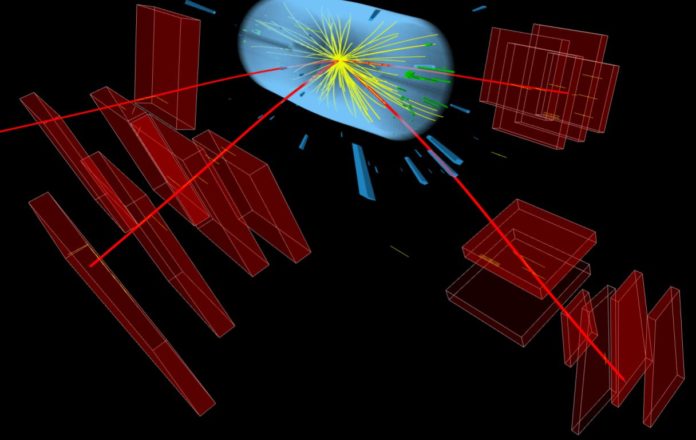Higgs boson lives for only 210 yoctoseconds. This is the most accurate measurement to date.
The lifetime of the Higgs boson, the legendary elementary particle that lives for an instant, was measured most precisely by physicists from the European Organization for Nuclear Research.
The hypothesis of the existence of the Higgs boson was put forward by British physicist Peter Higgs in 1964. It assumes that this boson is the last elementary particle predicted by the Standard Model, while other particles gain mass by interacting with it.
The discovery of the Higgs boson in 2012 was one of the most significant scientific breakthroughs of the century, and the scientists who worked on it won the Nobel Prize in Physics in 2013.
Since then, the conditions for the particle’s emergence have been replicated at the Large Hadron Collider on a regular basis in order to research its properties, as well as the attributes and genesis of the Higgs field.
However, because the Higgs boson’s lifetime is so short, this is not a simple task.
It’s so little that the boson created at the collider hasn’t had enough time to fly far enough to be directly measured in the detector.
Measuring the mass width, which is inversely proportional to the lifespan and represents the limited range of probable masses around the particle’s nominal mass of 125 GeV, is one possible option. But this isn’t straightforward either, because the Higgs boson’s projected mass width is too small to be observed easily by experiments.
Quantum physics saves the day. A short-lived particle like the Higgs boson can be formed with a mass significantly bigger than its nominal value in addition to being produced with a mass equal to or near to its nominal value, albeit the chances of this happening are low. This effect – and, by extension, the particle’s mass width – is a manifestation of Heisenberg’s uncertainty principle, and a comparison of the production rates of these large-mass, or “off-shell,” Higgs bosons with those of nominal or close to nominal, or “on-shell,” Higgs bosons can be used to extract the Higgs boson’s mass width and thus its lifetime.
The CMS team used this strategy in their latest research. CMS researchers have obtained the first-ever evidence for the production of off-shell Higgs bosons by analyzing data collected by the CMS experiment during the second run of the Large Hadron Collider (LHC), specifically data on Higgs bosons transforming into two Z bosons, which then transform into four charged leptons or two charged leptons plus two neutrinos. The CMS team calculated a Higgs boson lifetime of 2.1 x 10-22 seconds, with an upper/lower uncertainty of (+2.3/-0.9) x 10-22 seconds, based on this result, which has a 1 in 1000 probability of being a statistical fluke. This, the most accurate figure yet, agrees with the Standard Model prediction and confirms that the particle has a very short lifespan.
“Our result demonstrates that off-shell Higgs-boson production offers an excellent way to measure the Higgs boson’s lifetime,” said CMS physicist Pascal Vanlaer.
“And it sets a milestone in the study of the properties of this unique particle. The precision of the measurement is expected to improve in the coming years with data from the next LHC runs and new analysis ideas.”
Source: CERN
Image Credit: CERN
You were reading: Higgs boson: Physicists measure the “life” of the legendary particle
